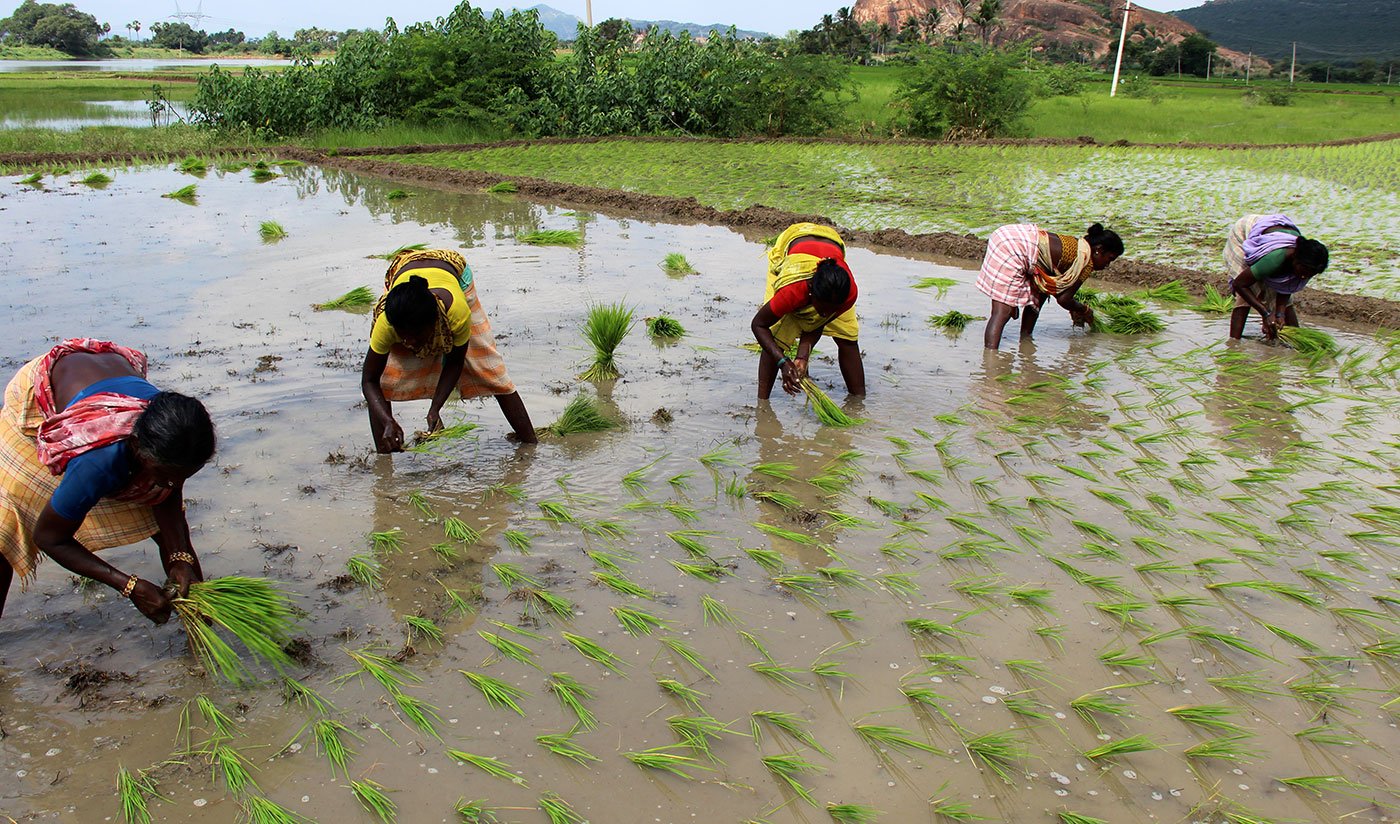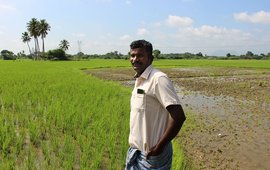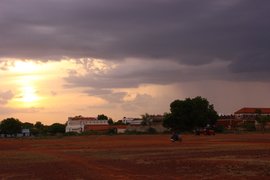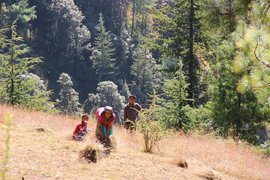The women of Nadumudalaikulam village in Tamil Nadu would scoff if shown the data of Census 2011. The figures there peg the workforce participation rate for rural women at 30.02 per cent. Men fare better at 53.03 per cent. On the ground, the reality is altogether different. Almost every woman in this village in Madurai district toils at home and in the fields. The housework is unpaid. The wage for women agricultural labourers is about half of what men get. To skew things further, the ‘weaker sex’ get the tougher work on the farm. Men prepare the field. It’s a job that has traditionally paid well. And is now increasingly mechanised. But 80% of the transplanting and weeding – both generate enormous strain on the back, legs and hands – is done by women.
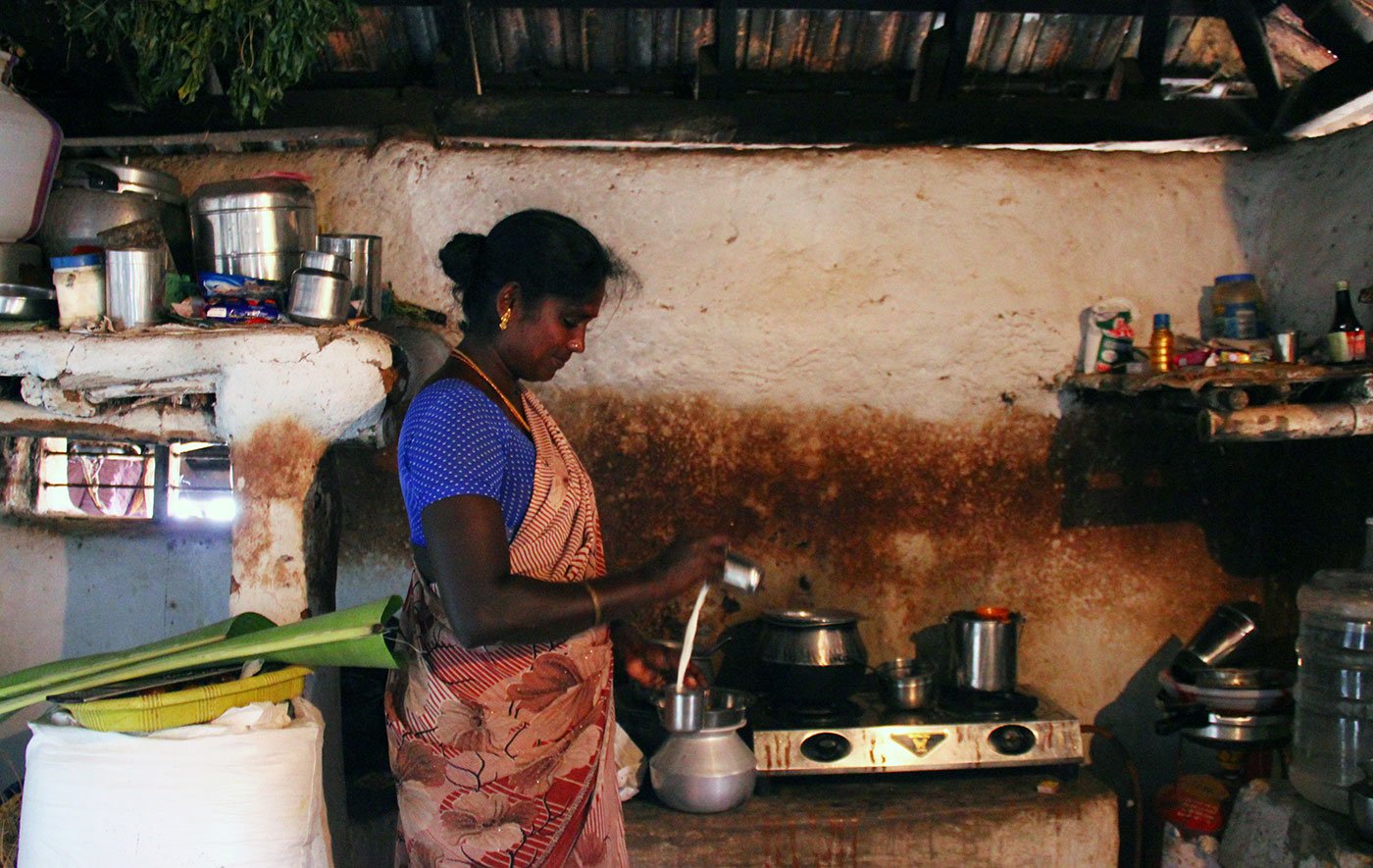
Podhumani, who cultivates 3.5 acres with her husband C. Jeyabal (a farmer and swimming instructor) also works as a labourer in the fields of others. That second role brings in some extra money. The going rate is Rs.100 for four hours (8 a.m. to 12 p.m). Podhumani’s mornings are frenetic. Up at 5 a.m. she cooks, sorts out her house and packs food for her school-going sons. Then she takes a ‘short-cut’ to the fields, wading across waist-deep water in a kamma (pond). Next, she pitches in with the watering, transplanting, weeding or harvesting of their own farm. After a late but quick lunch, she tends to the cows, goats and the sheds. Then she cooks dinner. There’s a gentle smile on her face as she speaks. It widens when her husband acknowledges her hard work. Both are keen for their sons to study and work ‘in an office’, not on a farm. “I’ve never been to school,” she says. Her eyes fill up. She looks away.
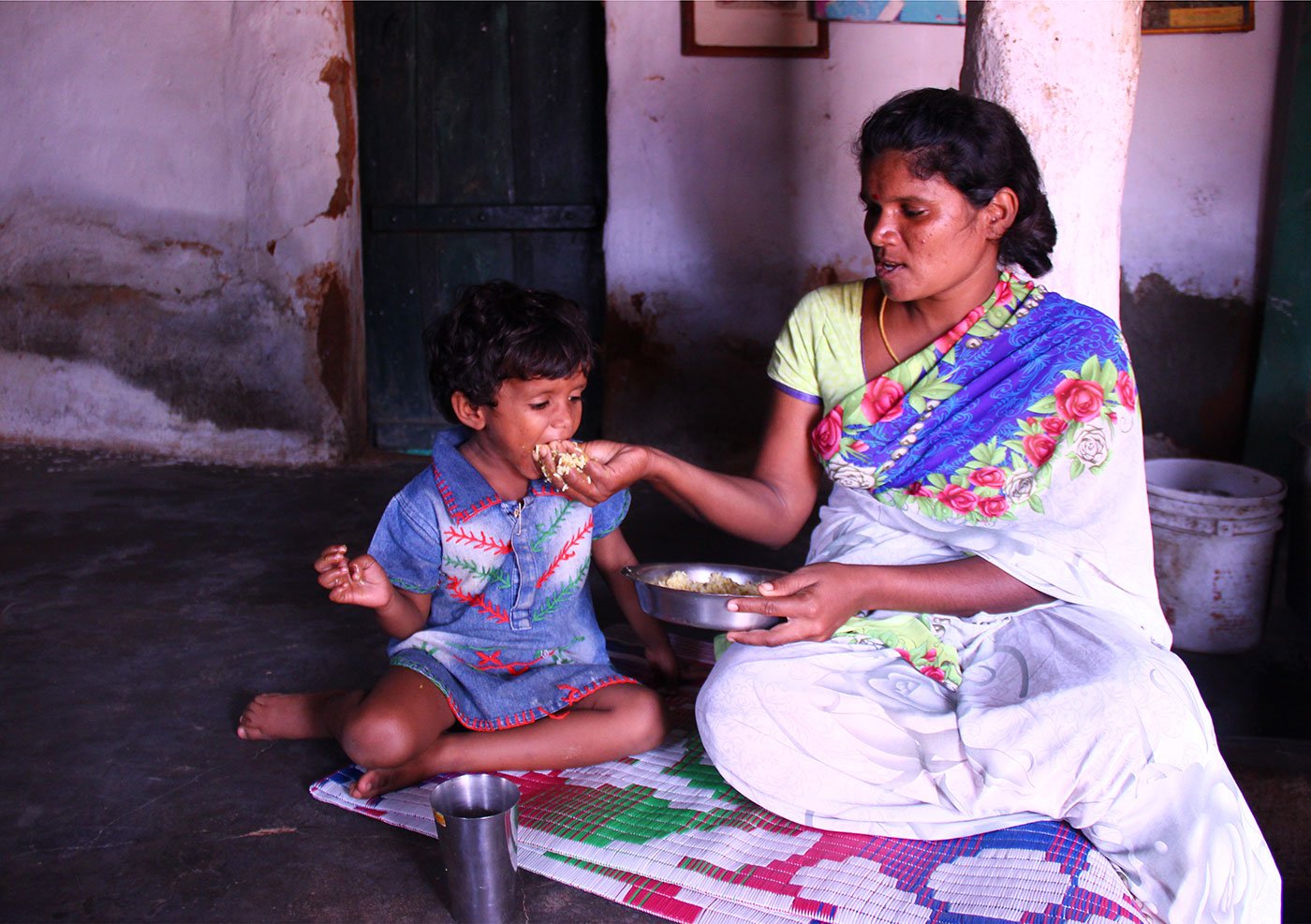
Logamani Ilavarasan feeds her daughter Shobana. She makes a small ball of rice and sambhar (a lentil-based stew). The four-year-old opens her mouth eagerly. She is rarely hand-fed. Her mother mostly has no time for that. Logamani has two older children. And more work than she can do, both in her own fields and those of others. She leaves home at 8 a.m. when her kids go to school. She’s back when they return. When they were tiny, she took them with her to the paddy fields. “First, we put them in a cloth cradle, hung between trees. When they’re about eight months old, they sit and play in the field border.” The women work right up to the day before they deliver. And typically, are back in the fields one month after childbirth. “Government hospital for us, government school for our children. We cannot afford any private stuff,” says the 29-year-old, who works every waking hour, every day.
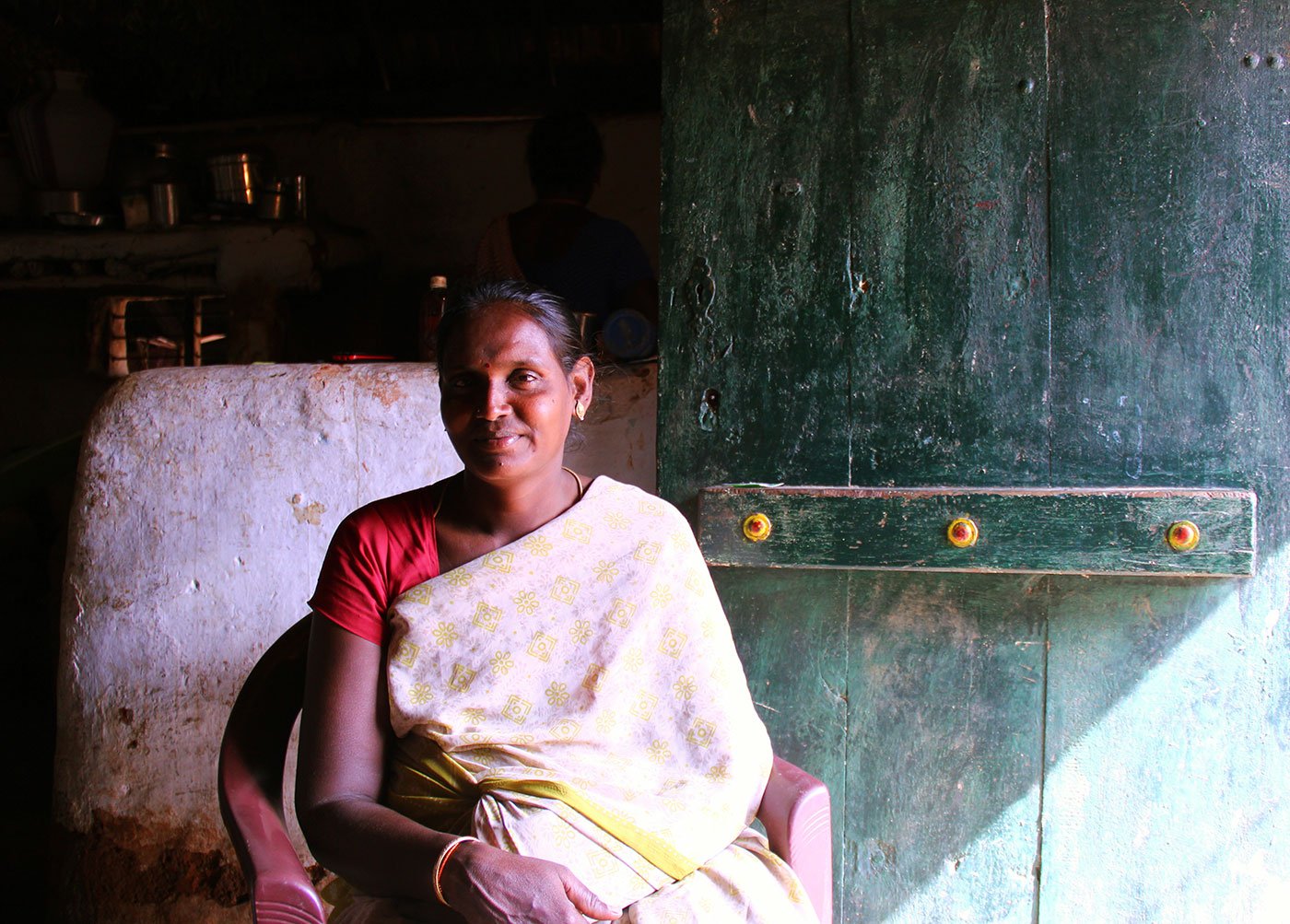
“I was 14, he was 30. Had I known better…,” Nagavalli Thirunavakarasu talks about her marriage with a twinge of regret. Two decades later, she’s got her hands full with three children, milch cows and a day job as an agricultural labourer. Her husband, a lorry-loader, earns Rs.150 per day. The work takes him to Madurai city, 25 kilometres away. She gets Rs. 100 a day as an agricultural labourer and Rs. 140 when there is work to be had under the Mahatama Gandhi National Rural Employment Guarantee Scheme (MNREGS). Their combined income just about covers the family’s daily expenses. “I want something better for my daughters,” she says firmly. “They must study, not get married early.” The eldest one is a second-year BA English student. Nagavalli is proud that the girl has decided to be a teacher. The younger daughter is a high-school commerce student. The youngest child, a boy, is in Class 8. “Only he shows no interest in helping us out in the fields. The girls come. At least when I ask them to…”
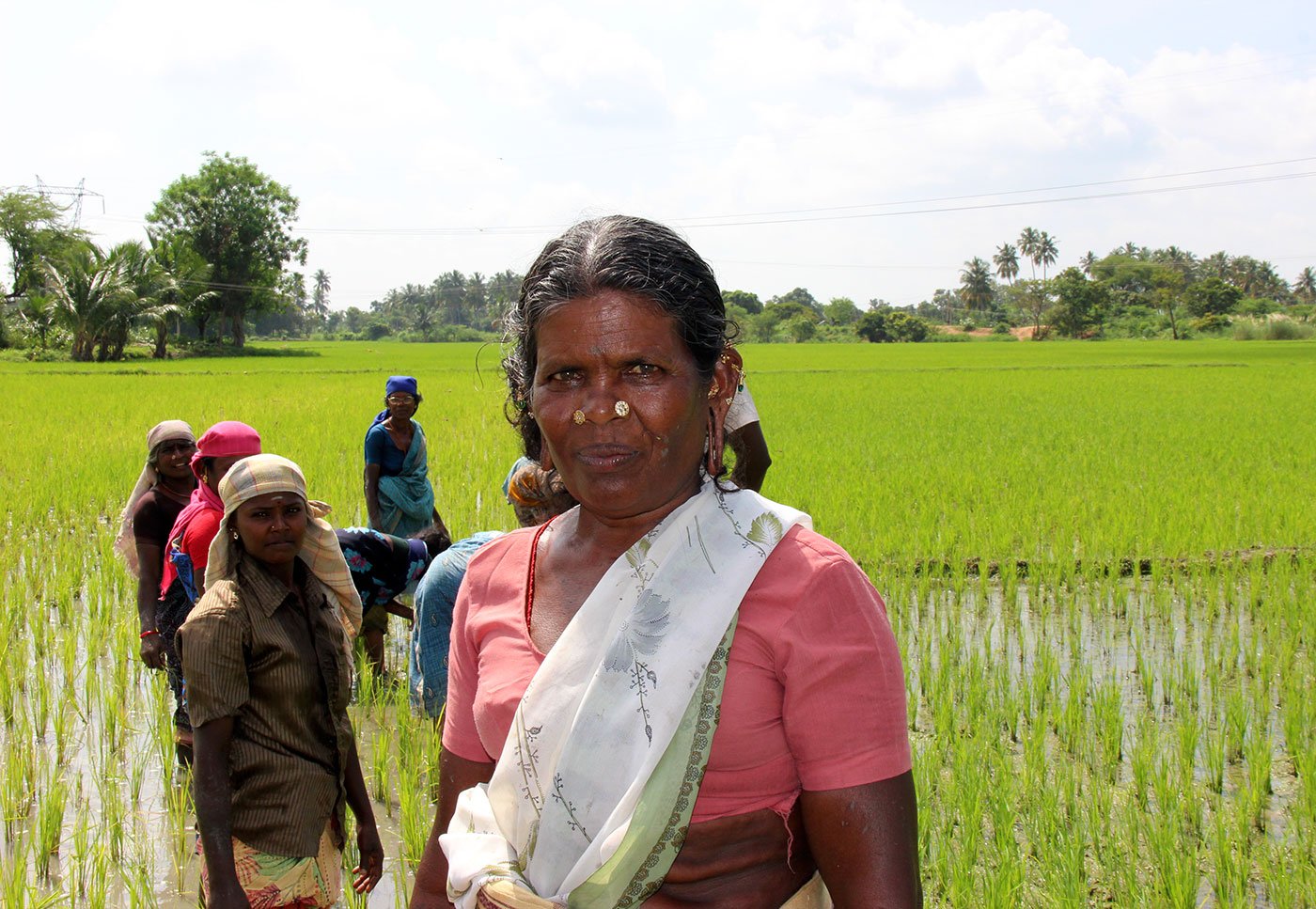
Ochamma Gopal is one of the big landowners in the village. She closely supervises the other women working her 15 acres. She’s well respected, knowledgeable and pays her workers Rs. 100 for a day’s work. But the village women would much rather do MNREGS work when that is available is available. That pays Rs. 40 more a day. And, they point out, the supervisors do not stand on the field’s border the whole time ordering them about.
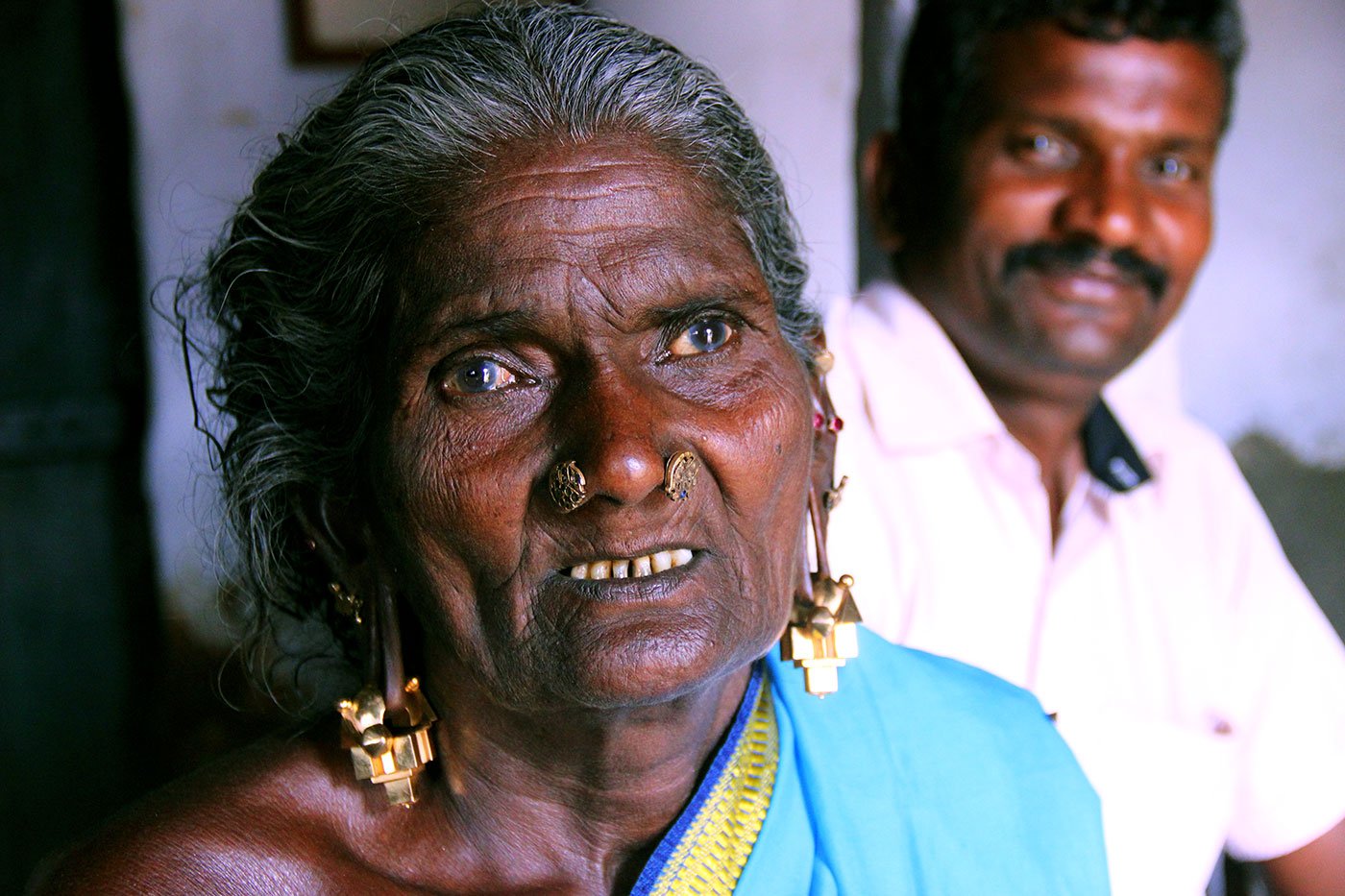
Kannammal Chinnathevar, 70, allowed me to photograph her only after she had changed into a beautiful blue saree and worn her enormous gold earrings. It was past 3 p.m. and she was just back after a day’s slog as an agricultural labourer. She wears her sarees without a blouse, draped in the typical style of the region. Her back is straight, her skin gently wrinkled. Her eyes are cloudy and she can only hear if you speak loudly enough. But she smiles and nods a lot. Her son Jeyabal tells me that she goes to work even though she’s financially secure. “She owns some gold and lends out money. She is not dependent on me,” he laughs.
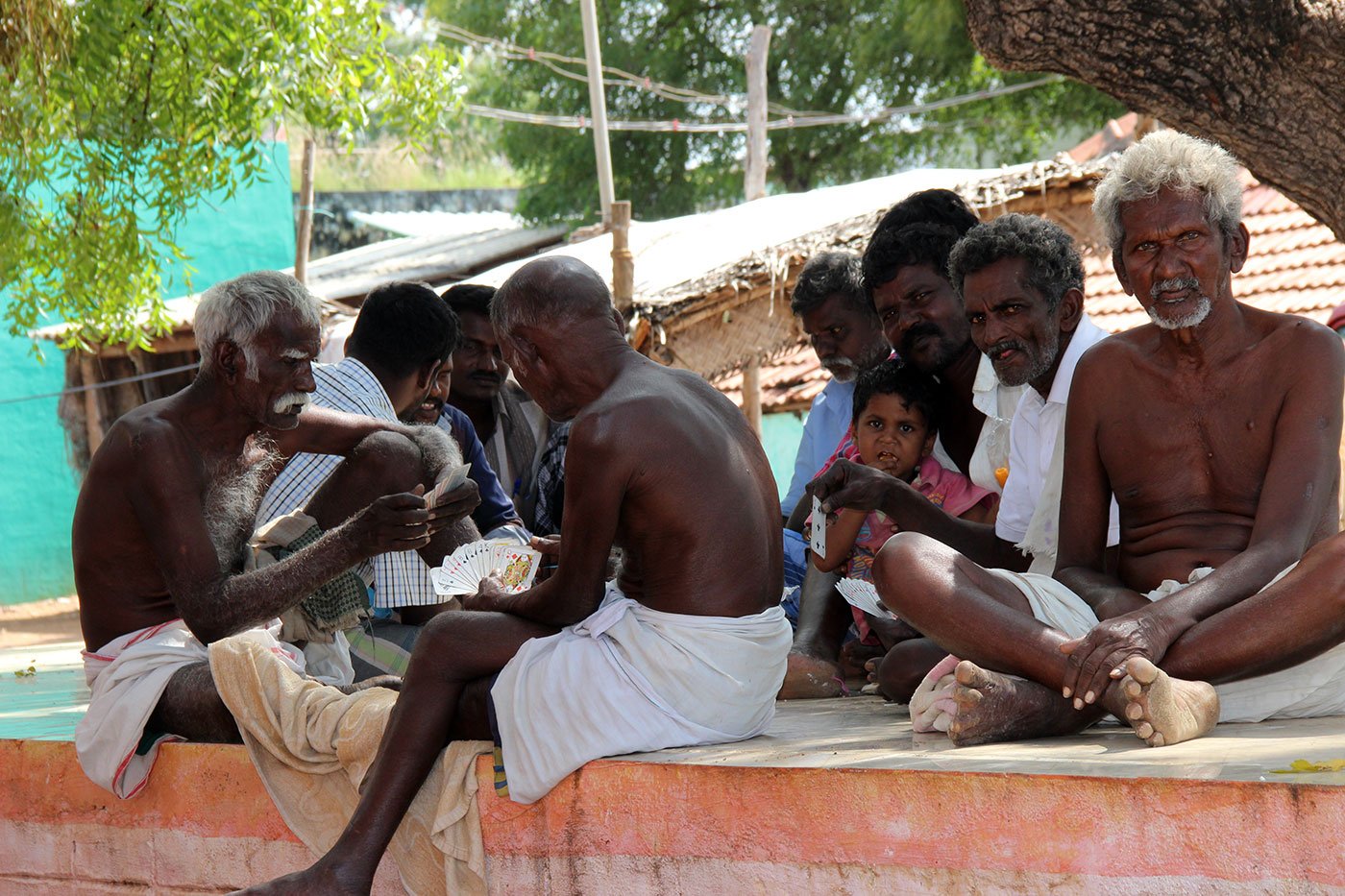
While the women are at work in the fields, the men are busy. The older ones play cards in the afternoon shade of a neem tree. “That’s my father,” Jeyabal points to the man on the right. His hair is as white as his hoicked-up dhoti. Behind him are younger men watching the game. If the 2011 Census is to be believed, “the workforce participation rate for females at the national level stands at 25.51% compared with 53.26% for males. In the rural sector, females have a workforce participation rate of 30.02% compared with 53.03% for males. In the urban sector, it is 15.44% for females and 53.76% for males.”
The women of Nadumudalaikulam would surely be interested to find out what, according to the Census, constitutes “work”…
Also read: Where farming means two full-time jobs
This article is part of the series ‘Vanishing Livelihoods of Rural Tamil Nadu’ and is supported under NFI National Media Award 2015.
